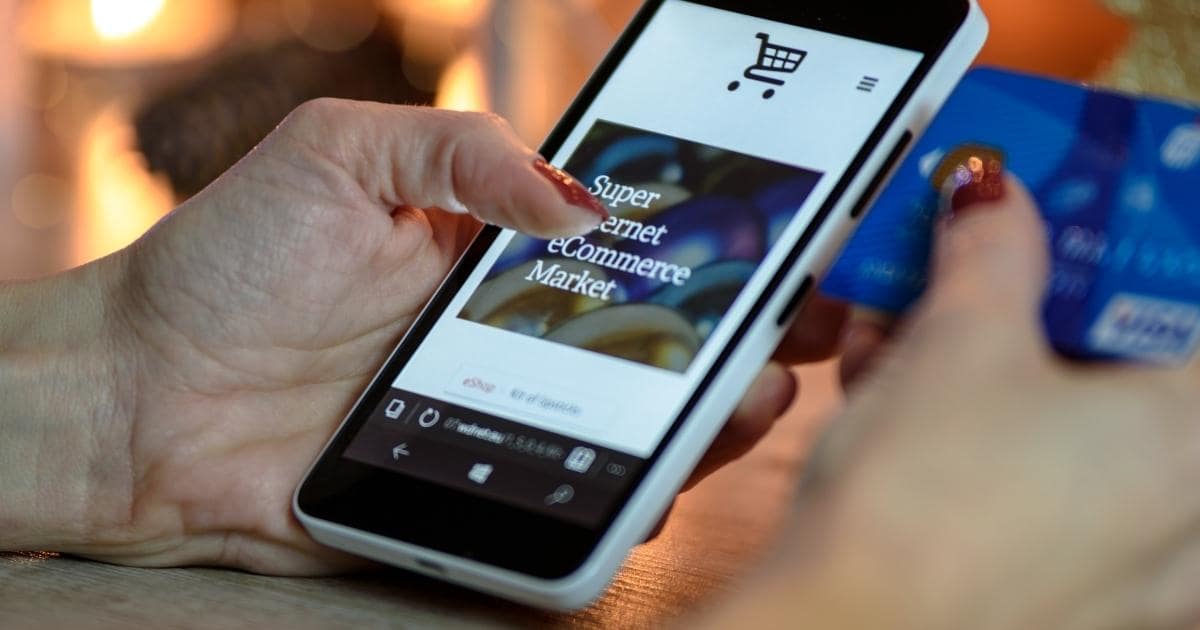Unwrapping Holiday Shopping Insights: Trends, Tactics, and Tips for Procurement in 2023
The holidays are here, meaning people all around the globe are attending festive parties, baking tasty treats, and — of course — shopping for gifts. It’s a time that can be both exciting and stressful for retailers, especially when many procurement teams face supply shortages, staffing shortages, and other day-to-day challenges.
In this post, we’ll help you prepare by diving into holiday shopping trends for 2023, including the most popular gifts, when people start shopping, and how much they spend. Then, we’ll share some tips on how retailers can streamline and optimize procurement to ensure a successful holiday shopping season.
What’s trending this holiday season?
The holiday season isn’t just about buying gifts — consumers are also boosting the economy by spending more on decorations, food, and other holiday prep items. Let’s take a look at when, where, and how shoppers are getting into the spirit of the season.
Shopping Season Kicks Off Earlier
Black Friday used to represent the start of the holiday shopping season. But as ecommerce grows in popularity, the kick-off date has been creeping up with every passing year. These days, many Americans start shopping long before Thanksgiving week rolls around: according to a recent survey, 50% of consumers said they planned to start shopping in October, and 40% said they’d start in November. Just a mere 10% planned to start shopping in December — meaning retailers should prepare for the season well before fall.
Retail Sales Growth Slows — But Is Still Climbing
Despite rising inflation and economic uncertainty, consumers are still in the mood to shop — they’re just spending a little more cautiously. Retail sales reached $929.5 billion in 2022, and forecasters expect a 3% increase in sales this year. This is a much slower pace when compared to the 5.4% increase last year and the 12.7% increase in 2021.
Shoppers plan to spend an average of $920 on gifts, which is a small decrease from the $932 they spent last year. Similarly, shoppers are planning to buy less gifts than last year — an average of eight gifts instead of the nine gifts bought in 2022.

Promotions Fuel Spending
Along with spending more cautiously, consumers are motivated by better prices, better value, and promotions this holiday shopping season. A McKinsey survey found that 79% of shoppers are “trading down” this season, meaning they’re swapping purchases for cheaper alternatives or avoiding spending completely. The trend is consistent across all ages and income levels, although younger consumers are slightly more likely to trade down.
The same survey found that just 35% of consumers say they plan to splurge on themselves or others this year — a 4% decline from 2022. When broken down by generation, Gen Z is the most likely to tighten their budget, while Gen Xers and Boomers are more likely to splurge.
Clothes and Gift Cards Lead Retail Categories
A PYMNTS study found that clothing will be the most popular retail gift category this year, with gift cards following closely behind. Gen Z shoppers are driving the trend, with the age group planning to buy 70% more gift cards than older generations. Though digital gift cards are increasing in popularity, physical gift cards still reign as the most popular format.
A report on Google search trends reveals specific products that have surged in popularity this year, including Carhartt beanies, Dr. Martens boots, UGG Tasman slippers, parachute pants, and Away luggage. For the kids, Pokemon cards, Squishmallows, and the Nugget play couch are all the rage. Lastly, kitchen gadgets and tech gifts are trending, like the Ninja CREAMi, the Breville espresso machine, and Pixel Fold phone.
Improve Your Holiday Procurement Strategy with PPO
The holidays are a critical time for retailers. The pressure is on to optimize procurement strategies, meet customer expectations, and capitalize on big spending periods. Yet unpredictability in supply chains, demand forecasting, and geo-political factors can make it difficult to prepare for the season. Seasonal staffing, a high volume of returns, and complicated logistics due to weather can further increase the pressure put on retailers and procurement teams.
Luckily, predictive procurement orchestration (PPO) can take much of the stress and guesswork out of holiday procurement. By helping teams create strategies faster and across more areas of spend, PPO gives retailers a competitive advantage when they need it most.
Here are just a few of the benefits of PPO for holiday procurement.
Enhanced Forecasting Accuracy
Predictive analytics helps retailers accurately forecast the demand for specific products during the holiday season, ensuring that retailers procure the right quantities of popular items. It also minimizes the risk of stockouts or excess inventory, which can erode a retailer’s bottom line.

Efficient Supply Chain Management
With predictive procurement, organizations can proactively manage their supply chain, identifying potential bottlenecks or disruptions. This agility in supply chain management is crucial during the holiday season when demand spikes and operational efficiency is paramount.
Data-Driven Promotions
Promotions and value-driven products are big this year, and predictive analytics can help retailers maximize on the trend and design targeted, data-driven holiday promotions. By understanding customer preferences and predicting buying patterns, retailers can create promotions that resonate with their target audience, driving sales and customer engagement.
Strategic Planning for Seasonal Trends
Predictive procurement allows organizations to strategically plan for and capitalize on seasonal trends. By analyzing historical data and market trends, retailers can align their procurement strategies with evolving consumer preferences during the holiday season.
Supplier Relationship Management
Identify and evaluate supplier performance based on historical data, enabling organizations to build stronger relationships with reliable and high-performing suppliers. This is especially important leading into the holiday season, helping to foster better collaboration, more favorable terms, and reduced supply chain risks.
Reduced Lead Times
By predicting demand patterns and procurement needs, organizations can proactively manage lead times so they’re prepared for the holiday shopping rush. They can place orders well in advance, reducing the time it takes for goods to reach the shelves or customers, thereby improving overall operational efficiency.

Get Ready for the Holidays with Arkestro
The holidays can put procurement teams on the naughty list, but with Arkestro’s PPO software, organizations can seamlessly manage even the busiest shopping season. Arkestro leverages machine learning and behavioral science to automate and optimize procurement cycles, helping teams scale their influence and gain speed with confidence.
Chat with an expert today to see how we can help optimize your holiday procurement strategy and deliver greater value for your business.
FAQs
Holiday Shopping Insights
-
What are some key holiday shopping trends for 2023?
Holiday shopping trends for 2023 include an earlier start to the shopping season, slower retail sales growth compared to previous years, increased focus on promotions and value-driven purchases, and a preference for clothing and gift cards as popular gift categories.
-
How have consumer spending habits changed for the 2023 holiday season?
Consumers are spending more cautiously, motivated by better prices, value, and promotions. Many shoppers are “trading down” to cheaper alternatives or avoiding spending altogether. Despite this cautious approach, retail sales are still expected to increase by 3% compared to the previous year.
-
What are the popular retail gift categories for 2023?
Clothing and gift cards lead the list of popular retail gift categories for 2023. Additionally, specific products such as Carhartt beanies, Dr. Martens boots, UGG Tasman slippers, and various tech gadgets are trending among consumers.
-
How can retailers optimize their procurement strategies for the holiday season?
Retailers can optimize their procurement strategies for the holiday season by leveraging predictive procurement orchestration (PPO) software. PPO helps enhance forecasting accuracy, improve supply chain management, design data-driven promotions, strategically plan for seasonal trends, manage supplier relationships, and reduce lead times.
-
What are the benefits of using PPO for holiday procurement?
The benefits of using PPO for holiday procurement include enhanced forecasting accuracy, efficient supply chain management, data-driven promotions, strategic planning for seasonal trends, improved supplier relationship management, and reduced lead times, ultimately helping retailers capitalize on the holiday shopping season.
-
How can Arkestro's PPO software help retailers during the holiday season?
Arkestro’s PPO software leverages machine learning and behavioral science to automate and optimize procurement cycles, helping retailers seamlessly manage even the busiest shopping season. It enables teams to scale their influence, gain speed with confidence, and optimize their holiday procurement strategy for greater business value.
-
What steps can retailers take to prepare for the holiday season with Arkestro?
Retailers can chat with an expert at Arkestro to explore how PPO software can help optimize their holiday procurement strategy, streamline processes, and deliver greater value for their business. Arkestro’s expertise in predictive procurement can provide valuable insights and recommendations tailored to the retailer’s specific needs and goals.
